Note
Click here to download the full example code
Plotting with Geoplot and GeoPandas¶
Geoplot is a Python library providing a selection of easy-to-use geospatial visualizations. It is built on top of the lower-level CartoPy, covered in a separate section of this tutorial, and is designed to work with GeoPandas input.
This example is a brief tour of the geoplot API. For more details on the library refer to its documentation.
First we’ll load in the data using GeoPandas.
import geopandas
import geoplot
world = geopandas.read_file(
geopandas.datasets.get_path('naturalearth_lowres')
)
boroughs = geopandas.read_file(
geoplot.datasets.get_path('nyc_boroughs')
)
collisions = geopandas.read_file(
geoplot.datasets.get_path('nyc_injurious_collisions')
)
Plotting with Geoplot¶
We start out by replicating the basic GeoPandas world plot using Geoplot.
geoplot.polyplot(world, figsize=(8, 4))
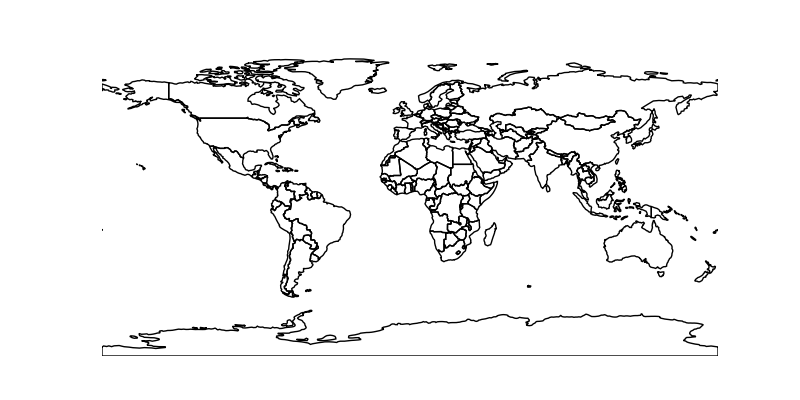
Geoplot can re-project data into any of the map projections provided by CartoPy (see the list here).
# use the Orthographic map projection (e.g. a world globe)
ax = geoplot.polyplot(
world, projection=geoplot.crs.Orthographic(), figsize=(8, 4)
)
ax.outline_patch.set_visible(True)
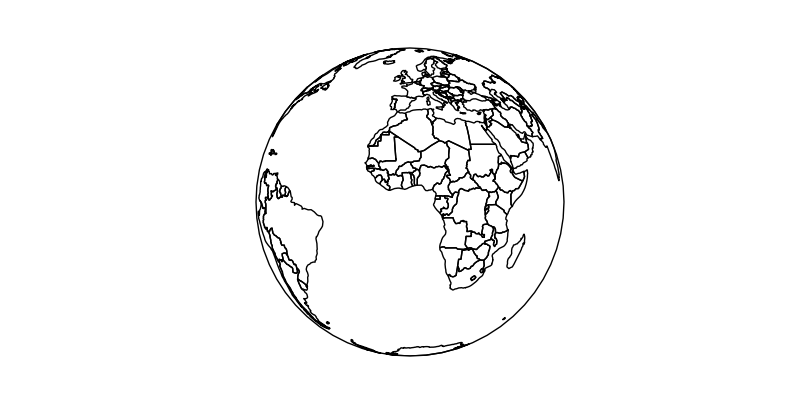
Out:
/home/docs/checkouts/readthedocs.org/user_builds/geopandas/conda/v0.8.0/lib/python3.7/site-packages/geoplot/geoplot.py:680: UserWarning: Plot extent lies outside of the Orthographic projection's viewport. Defaulting to global extent.
'Plot extent lies outside of the Orthographic projection\'s '
polyplot is trivial and can only plot the geometries you pass to it. If
you want to use color as a visual variable, specify a choropleth. Here
we sort GDP per person by country into five buckets by color, using
“quantiles” binning from the Mapclassify
library.
import mapclassify
gpd_per_person = world['gdp_md_est'] / world['pop_est']
scheme = mapclassify.Quantiles(gpd_per_person, k=5)
# Note: this code sample requires geoplot>=0.4.0.
geoplot.choropleth(
world, hue=gpd_per_person, scheme=scheme,
cmap='Greens', figsize=(8, 4)
)

If you want to use size as a visual variable, use a cartogram. Here are
population estimates for countries in Africa.
africa = world.query('continent == "Africa"')
ax = geoplot.cartogram(
africa, scale='pop_est', limits=(0.2, 1),
edgecolor='None', figsize=(7, 8)
)
geoplot.polyplot(africa, edgecolor='gray', ax=ax)
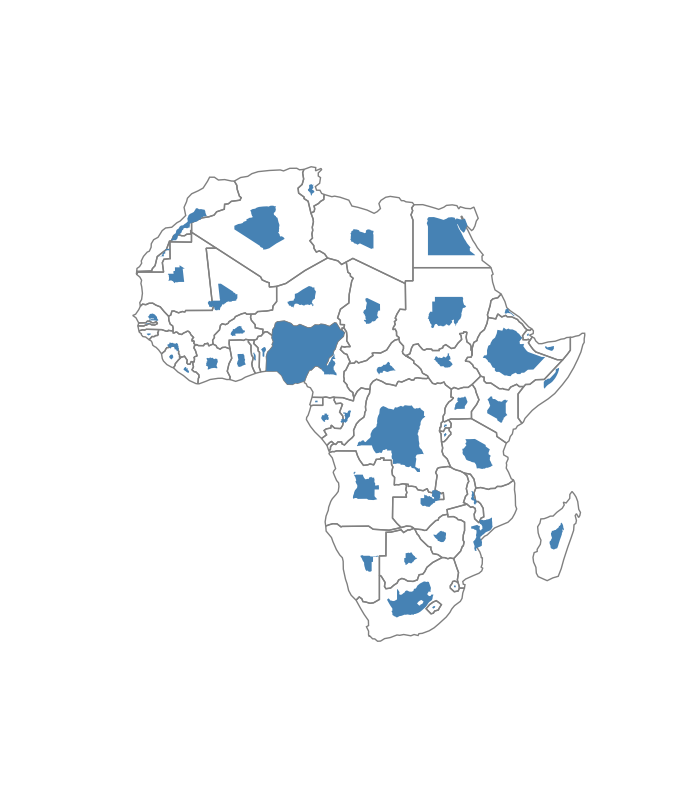
If we have data in the shape of points in space, we may generate a
three-dimensional heatmap on it using kdeplot.
ax = geoplot.kdeplot(
collisions.head(1000), clip=boroughs.geometry,
shade=True, cmap='Reds',
projection=geoplot.crs.AlbersEqualArea())
geoplot.polyplot(boroughs, ax=ax, zorder=1)
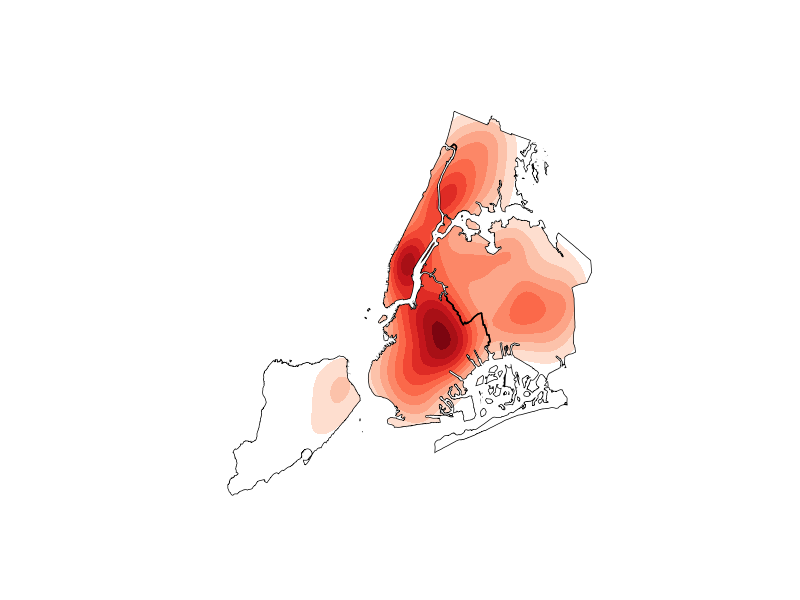
Alternatively, we may partition the space into neighborhoods automatically, using Voronoi tessellation. This is a good way of visually verifying whether or not a certain data column is spatially correlated.
ax = geoplot.voronoi(
collisions.head(1000), projection=geoplot.crs.AlbersEqualArea(),
clip=boroughs.simplify(0.001),
hue='NUMBER OF PERSONS INJURED', cmap='Reds',
legend=True,
edgecolor='white'
)
geoplot.polyplot(boroughs, edgecolor='black', zorder=1, ax=ax)
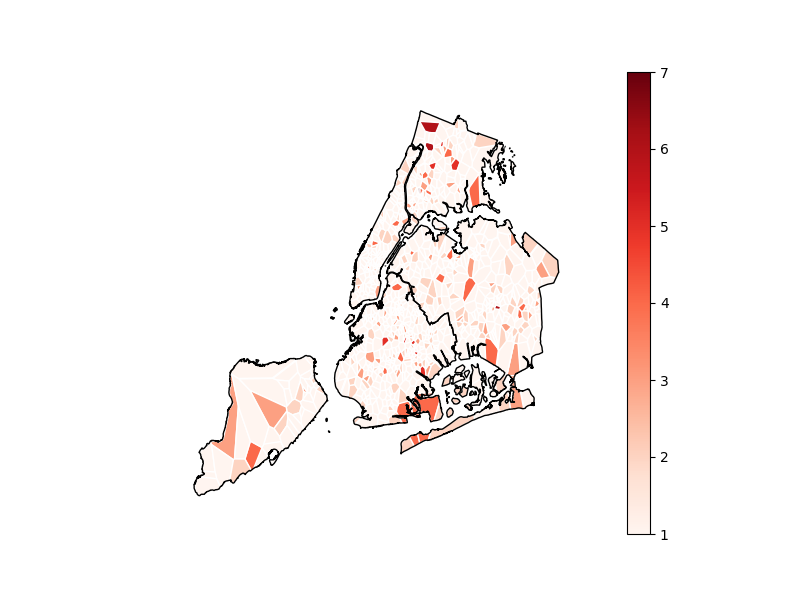
Out:
/home/docs/checkouts/readthedocs.org/user_builds/geopandas/conda/v0.8.0/lib/python3.7/site-packages/geopandas/geodataframe.py:830: UserWarning: Geometry column does not contain geometry.
warnings.warn("Geometry column does not contain geometry.")
These are just some of the plots you can make with Geoplot. There are many other possibilities not covered in this brief introduction. For more examples, refer to the Gallery in the Geoplot documentation.
Total running time of the script: ( 0 minutes 13.710 seconds)